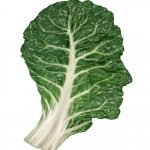Low-Dose Lithium: An Effective Treatment for Mood Disorders
Tolle Causam
Nicole Cain, ND, MA
Pharmaceutical lithium carbonate is widely considered one of the most effective medications in psychiatry for treating bipolar depression. However, due to the potentially toxic effects of lithium at high doses, many doctors are reluctant to prescribe this drug. This reputation has unfortunately pushed lithium of the limelight altogether as a viable option for patients suffering from depression or bipolar disorder.
There is an alternative way to effectively use lithium to treat depression and bipolar disorder, which is to use the trace mineral at a lower dose and bound to orotic acid.
Let me start by sharing 2 stories of patients:
Case Study 1
Jaia was 27 years old when she presented to my practice for consultation about her bipolar disorder type II. She suffered from severe depression and rage outbursts and had a history of being incarcerated for vandalism of a parked car. Her mania was stabilized on the pharmaceutical drug paliperidone, but her symptoms were nowhere near being controlled.
Hair mineral testing revealed low lithium status, so we started her on lithium orotate, 2 mg per day, which we slowly increased to 5 mg 3 times per day. Jaia quickly noticed her irritability lifting, and her anger outbursts disappeared.
Case Study 2
Twelve-year old Adam had been removed from 3 middle schools by the time they called my office. He was very depressed and regularly got into fights with the other students in the classroom. He was defiant with his teachers and had tantrums at home so severe that the police had been called multiple times. In my office he glared at me, argued with his parents, and at one point threatened to physically injure his mother if she kept talking. His parents were reluctant to start him on any medications, but his symptoms were severe and they felt that they were out of options.
Hair mineral analysis showed a low lithium and high mercury. We examined his history for the source of mercury exposure, and learned that he had received silver amalgam fillings for 6 cavities when he was a toddler. We know from the literature that mercury from silver dental fillings can be a cause of depression, rage, and anxiety.1 I started Adam on lithium orotate, 200 µg per day, and we worked our way up to 2 mg/day. His parents also found a biological dentist, who safely removed and replaced Adam’s mercury fillings. Within 3 weeks his anger had disappeared, and his behavior in school and at home had improved. Testing was repeated after 3 months, which showed that his lithium levels had normalized and his mercury levels were drastically reduced.
Lithium in Drinking Water & the Diet
Research has shown a strong inverse relationship between lithium consumption and the incidence of violent crimes, arrests, suicides, and drug dependency.2,3 These studies have also noted statistically significant reductions in these behaviors in cities where trace-element lithium orotate was added to the water. Although optimal amounts of lithium in drinking water have not been established, lists of groundwater lithium amounts (µg/L) per state are readily available.4 Experts have suggested that, depending on the geographical location, 1 mg lithium per liter of tap water corresponds to approximately 6.9 mg lithium carbonate.5 Assuming ingestion of <2 liters or water per day, this would translate to roughly 1% of a standard therapeutic dose of lithium carbonate.
Elemental lithium – which is found in a variety of foods, including grains, vegetables, kelp, dairy, meat, fish, pistachios, and mustard – is involved in the actions of numerous hormones, enzymes, and vitamins. Lithium is considered an essential nutrient; the RDA for lithium for a 70 kg adult is 1000 µg/day.6 While we know that lithium is necessary, it is important to understand the difference between lithium orotate and lithium carbonate.
Lithium Orotate vs Lithium Carbonate
Lithium orotate is a stable form of elemental lithium that is bound to orotic acid. Lithium carbonate is a pharmaceutical form of lithium that is prescribed in high doses for the treatment of bipolar disorder to prevent mania; it is also used in certain neurodegenerative diseases, such as Alzheimer’s disease.7 Animal studies suggest that lithium orotate is more bioavailable than lithium carbonate.8
Below is a quick glance at the mg differences between lithium carbonate and lithium orotate, as well as the average daily intake from dietary sources and water in cities where lithium is present in the water supply9:
- Lithium carbonate: 300 mg (containing 56 mg of elemental lithium)
- Lithium carbonate: 150 mg (containing 28 mg of elemental lithium)
- Lithium carbonate: 25 mg (containing 5 mg of elemental lithium)
- Lithium orotate: 120 mg (containing 5 mg of elemental lithium)
- Average dietary intake of elemental lithium: 1 mg/day
- Average intake of elemental lithium when added to ground water: 5 mg/day
Lithium’s Impact on Health
Lithium’s importance in human health begins as early as conception. For example, lithium is essential in fetal development.6 Lithium also supports the immune system by enhancing the activity of monocytes and lymphocytes.
Lithium is neuroprotective,10 one of the possible reason for its clinical effectiveness in bipolar disorder. Animal studies suggest that lithium’s neuroprotection occurs in several ways. For example, lithium stimulates stem cells in the brain by enhancing the release of brain-derived neurotrophic factor (BDNF), which appears to be key in neuronal longevity.11 Lithium also stimulates the release of nerve-growth factor (NGF) and changes genetic expression via epigenetics; NGF enables the brain to continue growing, healing, and developing.12 Increased brain volume and cell density have been observed in bipolar patients taking lithium carbonate.12
Lithium also enhances the transport into cells of folate and cobalamin into cells,12 B vitamins that are used by every cell in the body and which aid in a myriad of biochemical pathways, especially related to neurotransmitter metabolism. This is considered one of the mechanisms by which lithium is mood-stabilizing, reducing mania and aggression and lifting depression.12 In a small study of 24 former drug-users, some of whom also had a history of violent behavior, 400 µg/d of oral lithium significantly improved mood and stability compared with placebo.13
Low-dose lithium has been shown to augment the efficacy of antidepressant medications.14 For those who are suffering from mood disorders, including treatment-resistant depression, low-dose lithium supplementation may enhance the drug’s efficacy as well as reduce the risk of side effects and drug toxicity associated with high-dose lithium treatment.
Lithium also exerts powerful antioxidant and anti-inflammatory effects, thus helping to counter neurodegenerative diseases involving inflammation and oxidative damage.12 The result is a healthier brain and reduced risk of neurodegeneration and mood instability. The research into Alzheimer’s disease is particularly promising. In a mouse model of Alzheimer’s disease, low-dose lithium was shown to prevent beta-amyloid plaque accumulation and protect against memory deficits.15 Lithium treatment has been linked to a lower incidence of dementia among aging adults.10
Dosing of Lithium
In the mid-1980s, the US Environmental Protection Agency estimated that Americans’ dietary intake of lithium averaged between 0.6 and 3.1 mg/day.6 This is significantly less than that of individuals residing in the Northern Argentinian Andes mountains, whose daily lithium consumption is between 2 and 30 mg.16
Lithium intake requirements are influenced by several different factors. For example, since stress depletes lithium, individuals who endure high physical stress may require higher amounts of lithium.6 Those exposed to heavy metal toxicity may also require higher doses of lithium, as toxic metals can deplete the mineral.17 Variations in individual lithium metabolism, resulting from coadministration of drugs that induce or inhibit CYP450 pathways that clear lithium, would also impact dosage requirements.18
To determine optimal dosing for an individual considering high-dose lithium, obtaining a lithium measurement is recommended.
A daily adult lithium intake of 1 mg/day has been proposed.6 However, treatment dosages of lithium orotate range from 200 µg to 25 mg. In my own practice, I typically start my patients at 5 mg per day, and then see how they’re feeling after 1 week. If they feel the same or better (eg, improvements in depression, anger, brain fog, anxiety, and/or mood cycling), I either keep them at that dose or increase it to 5 mg twice daily (with increases being made in intervals of 5 mg each week). If any negative reaction occurs, I reduce or discontinue their lithium supplementation.
It is my opinion that lithium supplementation will have added benefit when combined with high-dose omega-3 fish oil (eg, 3-6 g/d), as well as B-vitamin complex, including folinic acid, methylcobalamin, and niacin. Supplementing a complex of B vitamins offers greater value for brain function as compared to supplementing single B vitamins.19 In patients with aggression and/or a history of severe stress, supplementation with phosphatidyl serine, L-theanine, taurine, glycine, and inositol may help optimize lithium’s efficacy, since all of these agents are GABAergic and neuroprotective20 and together may be synergistic.
Lithium Toxicity
Lithium toxicity is much less likely to occur when dosed as a trace mineral rather than as high-dose lithium carbonate. It is recommended that any patient who has been on a recent course of treatment with high-dose lithium be checked for various health metrics, the most important being tests for thyroid16 and organs of detoxification, ie, kidney, and liver.21
Lithium overdose can be nephrotoxic and neurotoxic.22,23 Possible symptoms of lithium toxicity include the following:
- Agitation
- Blood pressure abnormalities
- Confusion
- Diarrhea
- Drowsiness
- Fatigue
- Muscle weakness
- Palpitations
- Seizures
- Stomach pains
- Tremors or uncontrollable movements
- Urinary difficulties or pain
- Vomiting
Lithium Testing
Testing lithium levels before and during high-dose prescription lithium is important. Low-dose lithium is generally considered quite safe. Lithium can be tested in the blood, urine, or hair. Typically, blood tests for lithium are performed in order to determine what dose of lithium carbonate (pharmaceutical) is most appropriate for a patient. There is a very narrow window of safety for lithium carbonate; serum levels range from 0.8 to 1.2 mmol/L, with 1.0 mmol/L considered optimal for a patient undergoing treatment.24,25 Serum is useful for assessing current lithium levels; however, I have found the most useful way to test average long-term lithium levels is via hair analysis. Violent criminals have been found to have very low lithium concentrations in their hair samples,26 which reinforces the hypothesis that low lithium can cause aggression and warrants supplementation in such individuals.
Conclusion
Pharmaceutical lithium carbonate is widely used in the treatment of bipolar disorder. However, the high doses used pose a danger of toxicity. Lithium orotate is a more bioavailable form of the mineral, and in low doses is not only considered safe, but also efficacious in the treatment of both mood and behavioral disorders. Lithium is also neuroprotective and anti-inflammatory, thus offering promise in the area of dementia. Any patient on or considering pharmaceutically dosed lithium carbonate should be tested and closely monitored for nephro- and neurotoxicity.
References:
- Siblerud RL, Motl J, Kienholz E. Psychometric evidence that mercury from silver dental fillings may be an etiological factor in depression, excessive anger, and anxiety. Psychol Rep. 1994;74(1):67-80.
- Schrauzer GN, Shrestha KP. Lithium in drinking water and the incidences of crimes, suicides, and arrests related to drug addictions. Biol Trace Elem Res. 1990;25(2):105-113.
- Blüml V, Regier MD, Hlavin G, et al. Lithium in the public water supply and suicide mortality in Texas. J Psychiatr Res. 2013;47(3):407-411.
- PsychEducation.org. Depression. How much lithium in my water? Available at: https://psycheducation.org/treatment/mood-stabilizers/the-big-three-for-bipolar-depression/lithium/how-much-lithium-in-my-water/. Accessed October 1, 2019.
- Kapusta ND, König D. Naturally occurring low-dose lithium in drinking water. J Clin Psychiatry. 2015;76(3):e373-e374.
- Schrauzer GN. Lithium: occurrence, dietary intakes, nutritional essentiality. J Am Coll Nutr. 2002;21(1):14-21. Available at: https://www.johnfial.com/wp-content/uploads/2002/Lithium%20Occurrence,%20Dietary%20Intakes,%20Nutritional,%20003834938.pdf. Accessed October 1, 2019.
- Engel T, Goñi-Oliver P, Gómez de Barreda E, et al. Lithium, a potential protective drug in Alzheimer’s disease. Neurodegener Dis. 2008;5(3-4):247-249.
- Kling MA, Manowitz P, Pollack IW. Rat brain and serum lithium concentrations after acute injections of lithium carbonate and orotate. J Pharm Pharmacol. 1978;30(6):368-370.
- PsychEducation.org. Lithium Orotate. Updated April 2019. Available at: https://psycheducation.org/treatment/mood-stabilizers/the-big-three-for-bipolar-depression/lithium/lithium-orotate/. Accessed October 1, 2019.
- Post RM. The New News about Lithium: An Underutilized Treatment in the United States. Neuropsychopharmacology. 2018;43(5):1174-1179.
- Dwivedi T, Zhang H. Lithium-induced neuroprotection is associated with epigenetic modification of specific BDNF gene promoter and altered expression of apoptotic-regulatory proteins. Front Neurosci. 2014;8:457.
- Marshall TM. Lithium as a Nutrient. Journal of American Physicians and Surgeons. Winter, 2015;20(4). Available at: https://www.jpands.org/vol20no4/marshall.pdf. Accessed October 1, 2019.
- Schrauzer GN, de Vroey E. Effects of nutritional lithium supplementation on mood. A placebo-controlled study with former drug users. Biol Trace Elem Res. 1994;40(1):89-101.
- Alevizos B, Alevizos E, Leonardou A, Zervas I. Low dosage lithium augmentation in venlafaxine resistant depression: an open-label study. Psychiatriki. 2012;23(2):143-148.
- Nunes MA. Schöwe NM, Monteiro-Silva KC, et al. Chronic Microdose Lithium Treatment Prevented Memory Loss and Neurohistopathological Changes in a Transgenic Mouse Model of Alzheimer’s Disease. PLoS One. 2015;10(11):e0142267.
- Broberg K, Concha G, Engström K, et al. Lithium in drinking water and thyroid function. Environ Health Perspect. 2011;119(6):827-830.
- Shen Q, Hartwig JF. Palladium-catalyzed coupling of ammonia and lithium amide with aryl halides. J Am Chem Soc. 2006;128(31):10028-10029.
- Ketter TA, Frye MA, Corá-Locatelli G, et al. Metabolism and excretion of mood stabilizers and new anticonvulsants. Cell Mol Neurobiol. 1999;19(4):511-532.
- Kennedy DO. B Vitamins and the Brain: Mechanisms, Dose and Efficacy–A Review. Nutrients. 2016;8(2):68.
- Guzman F. Lithium’s Mechanism of Action: An Illustrated Review. Last updated June 27, 2019. Psychopharmacology Institute. Available at: https://psychopharmacologyinstitute.com/publication/lithiums-mechanism-of-action-an-illustrated-review-2212. Accessed October 1, 2019.
- Drugs.com. Lithium Orotate. Last updated November 21, 2019. Available at: https://www.drugs.com/npp/lithium-orotate.html. Accessed October 1, 2019.
- de Cates AN, Morlet J, Antoun Reyad A, Tadros G. Lithium overdose and delayed severe neurotoxicity: timing for renal replacement therapy and restarting of lithium. BMJ Case Rep. 2017;2017. pii: bcr-2017-222453. doi: 10.1136/bcr-2017-222453.
- Baird-Gunning J, Lea-Henry T, Hoegberg LCG, et al. Lithium Poisoning. J Intensive Care Med. 2017;32(4):249-263.
- Reddy DS, Reddy MS. Serum Lithium Levels: Ideal Time for Sample Collection! Are We Doing it Right? Indian J Psychol Med. 2014;36(3):346-347.
- Rej S, Beaulieu S, Segal M, et al. Lithium dosing and serum concentrations across the age spectrum: from early adulthood to the tenth decade of life. Drugs Aging. 2014;31(12):911-916.
- Schrauzer GN, Shrestha KP, Flores-Arce MF. Lithium in scalp hair of adults, students, and violent criminals. Effects of supplementation and evidence for interactions of lithium with vitamin B12 and with other trace elements. Biol Trace Elem Res. 1992;34(2):161-176.

Nicole Cain, ND, MA, is an expert in integrative mental health, with a focus on bipolar disorder and anxiety. Dr Cain has a master’s degree in Clinical Psychology from The Chicago School of Professional Psychology, and she earned her Doctorate of Naturopathic Medicine from the Southwest College of Naturopathic Medicine (SCNM). Dr Cain has taught clinical psychology didactically at the doctoral level, and has also headed clinical rotations in mental health at SCNM. Her practice is located in Scottsdale, AZ, and she also offers distance education and consultation.










